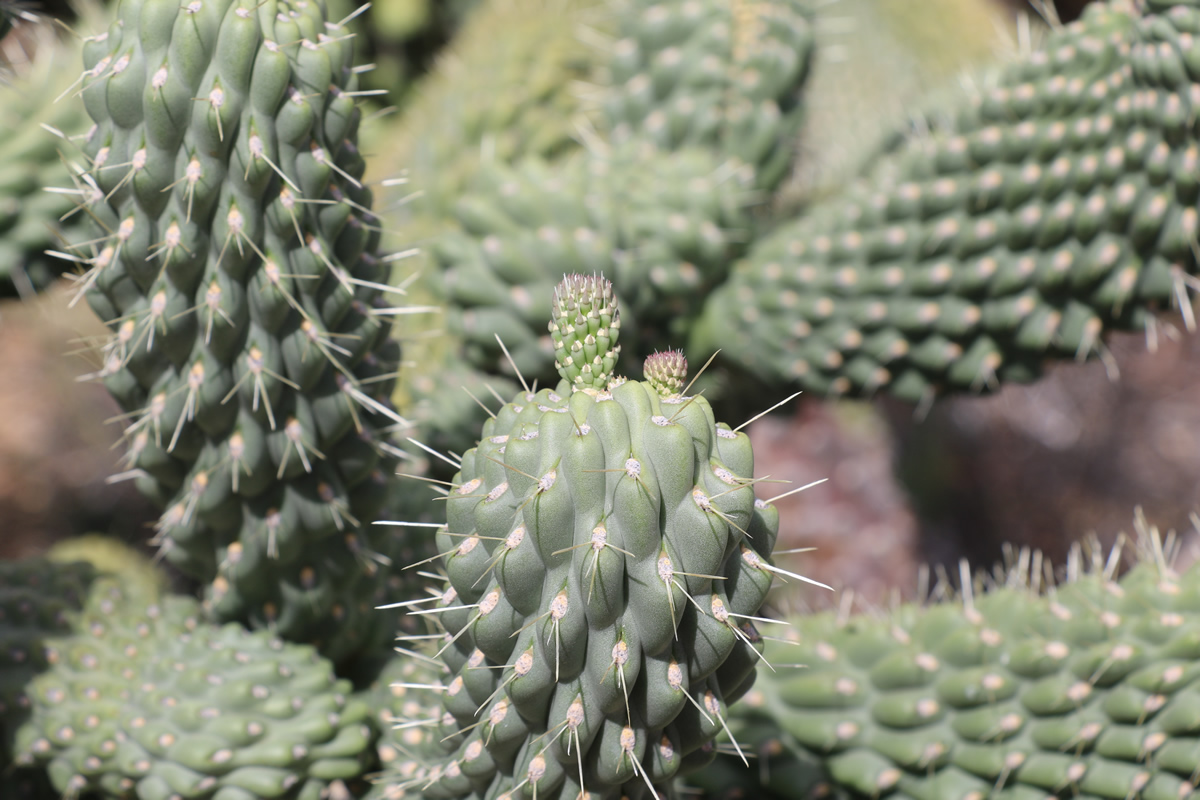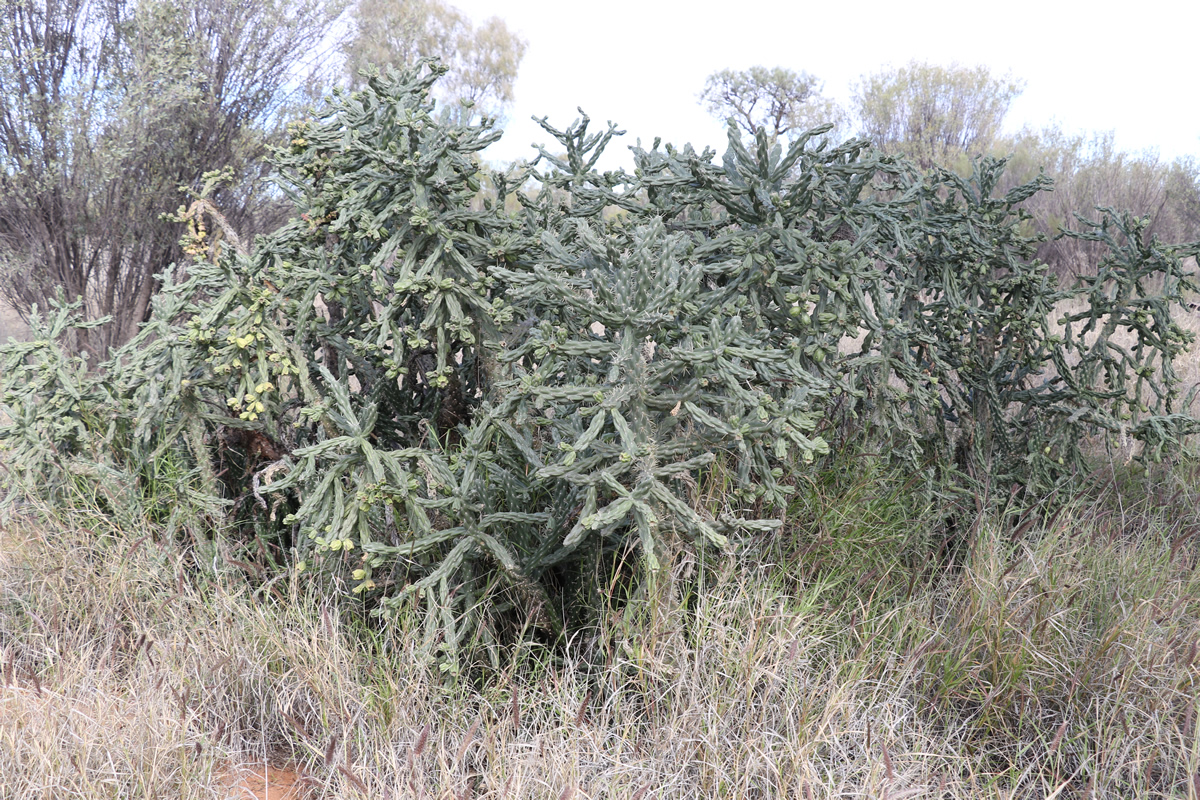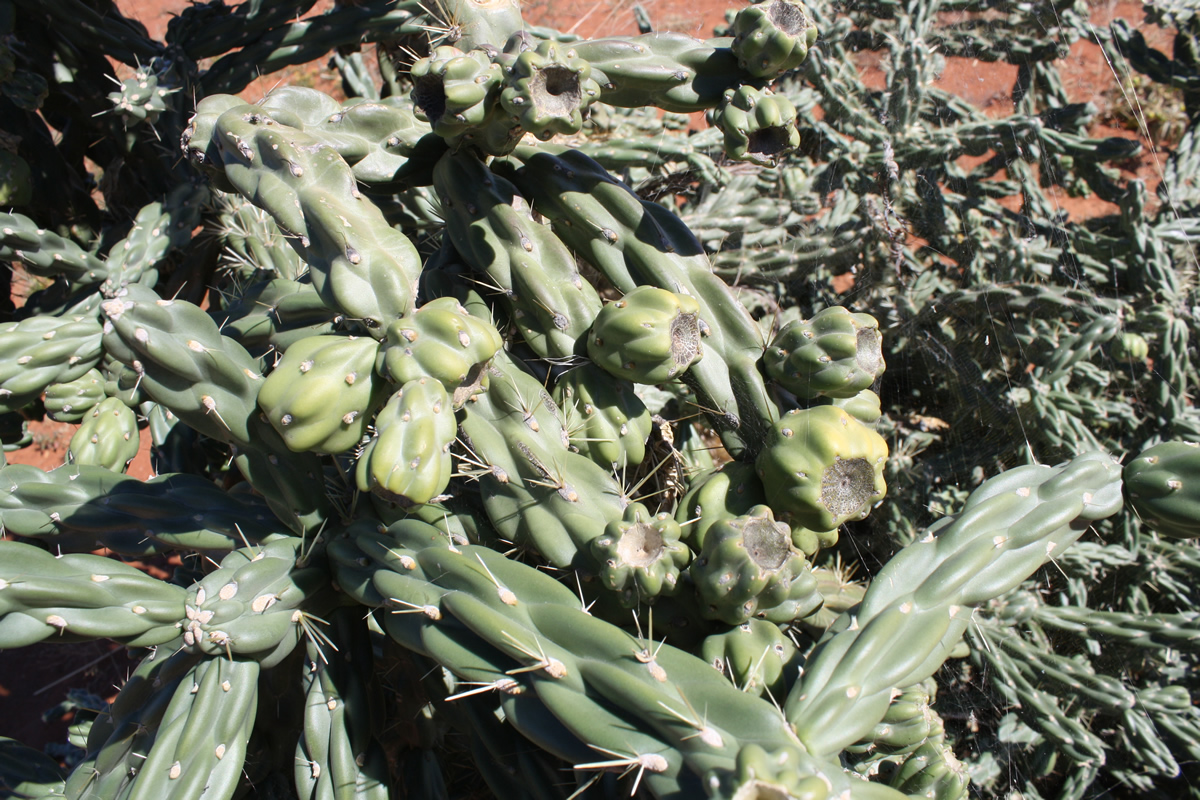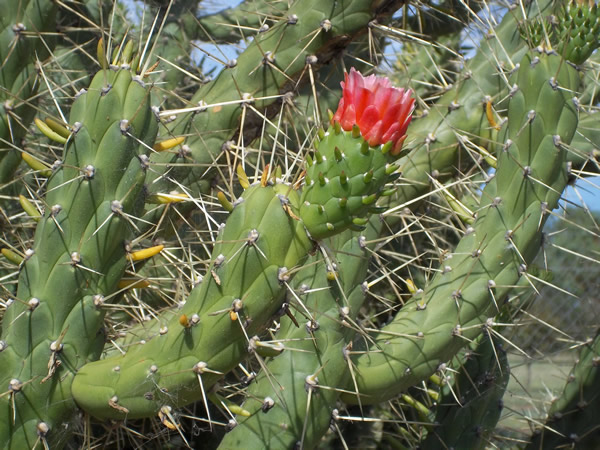Rope cactus
Scientific name: Austrocylindropuntia spp., Cylindropuntia spp.
Declaration status: Class A
All opuntioid cacti species in the genera Austrocylindropuntia, Cylindropuntia and Opuntia are Weeds of National Significance except for the Indian fig (Opuntia ficus-indica) which is a crop plant. For more information, go to the Australian Government's Department of Environment website.
Native to the Americas, opuntioid cacti can grow throughout a wide climatic range.
Species are found throughout all Australian states and territories, growing across varied soil types in areas that receive above 150mm of rainfall annually.
The majority are drought-resistant and hardy.
Many species were deliberately introduced as food, fodder, ornamentals and for the former cochineal industry.
Some species have since proven to be highly invasive, others flourish in disturbed areas such as dumps and disused mine sites.
There are infestations of coral cactus (Cylindropuntia fulgida var. mamillata) on and around the rocky hillslopes surrounding Alice Springs.
White-spined Hudson pear (Cylindropuntia rosea) and devil's rope (Cylindropuntia imbricata) have been found growing wild at various locations in central Australia.
There are no known specimens or infestations of Austrocylindropuntia spp. in the NT.
Find out more about infestations and what you can do to prevent the spread by reading the invasive cacti fact sheet PDF (3.1 MB).
For more information, get the rope cacti fact sheet on the Territory Stories website.
Impact
Opuntioid cacti can have all of the following impacts:
- spines can cause serious injury to humans, stock and native animals
- can form large stands that harbour feral animals
- limits access for mustering and recreational activities
- spines can contaminate wool and hides
- infestations can reduce or prevent grazing activities, reducing productivity.
Identification
You should use this as a guide. There may be other plants or weeds that look similar.
- range from low growing shrubs to erect trees up to 8m tall, usually around 0.5m to 2m tall and are covered with spines
- some have small or large club-shaped segments, some have smaller cylindrical segments that look like ropes
- all are covered with spines 1cm to 5cm long
- flower colours vary from red or pink to yellow.
If you are unsure, contact the Weed Management Branch.
Control
Chemical control
Below is a list of treatment methods that can be used.
| Chemical and concentration | Rate | Situation, method and notes |
|---|---|---|
|
Triclopyr 600g/L Garlon® 600 | 800ml / 60L (diesel) |
Seedlings, juvenile, adults (individuals or infestations): Foliar spray entire plant surface, ensuring all plant surfaces are completely covered with spray-mix to the point of runoff. Avoid spraying plants that appear stressed. |
|
Triclopyr 240g/L and Picloram 120g/L Access™ | 1L / 60L (diesel) |
Seedlings, juvenile, adults (individuals or infestations): Foliar spray entire plant surface, ensuring all plant surfaces are completely covered with spray-mix to the point of runoff. Avoid spraying plants that appear stressed. |
Non-chemical control
Any form or physical removal must remove all parts of the plant as they can regenerate from small fragments. For this reason large scale removal such as bulldozing is not effective and in fact will cause opuntioid cacti to spread further.
Hand pulling and grubbing
Weeds, including their roots, are physically pulled out of the ground by hand or using hand tools. This is an effective method of control for individual weeds and recent outbreaks that haven’t released seeds yet, but it requires a lot of labour.
Alice Springs and Tennant Creek residents are encouraged to Bin it Don’t Spread It by getting cacti out of your garden before summer sets in. You can now dig out your declared cactus and put it into your wheelie bin for collection and removal to the waste management facility.
Biocontrol
Species of cochineal insect can be used to control a number of rope cacti, however biological control with insects requires a heavier density of plants than is present in the NT to sustain insect populations.
Spread
Opuntioid cacti mostly spread via plant segments which break off and are distributed by animals, water, machinery, vehicles and people.
Some species also produce viable seeds within large, bright coloured fruit that are spread by birds and other animals.
Spread prevention
You can prevent the spread of opuntioid cacti by doing all of the following:
- remove all specimens from your garden
- map infestations to help develop a management plan
- control minor infestations, isolated outbreaks or seedlings first
- designate wash down areas and actively work to prevent contamination of clean areas
- remove all segments and fruit from an area as they can regrow even under harsh conditions
- monitor areas that you have treated and watch for re-infestations.
Technical resources
To find out more about how to control opuntioid cacti, get the best practice manual on the Government of Western Australia's Department of Primary Industries and Regional Development website.
Give feedback about this page.
Share this page:
URL copied!




